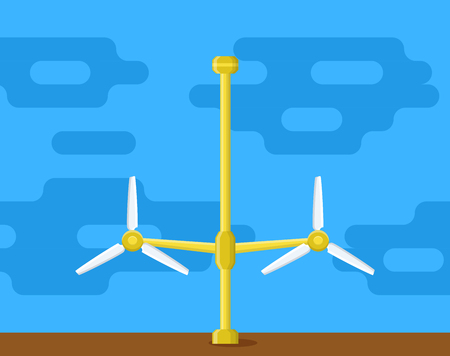1. Introduction to Solar Power for Camping
Camping has come a long way from the days of flashlights and ice chests. Today’s outdoor enthusiasts are bringing more gadgets than ever into the wilderness—smartphones, GPS devices, portable fridges, even laptops. But all these tools need power. That’s where solar energy comes in.
Solar power is becoming increasingly popular among campers across the U.S., and for good reason. It’s clean, quiet, and provides a reliable energy source without being tied to a campground power hookup or noisy gas generator. Whether you’re car camping at a national park or off-grid overlanding in your SUV, solar gear can keep your essentials charged while giving you the freedom to explore further.
Why Solar Energy Appeals to Campers
There are a few key reasons why solar gear is catching on among outdoor lovers:
| Reason | Description |
|---|---|
| Environmental Benefits | Solar power produces zero emissions, making it an eco-friendly choice that aligns with Leave No Trace principles. |
| Energy Independence | No need to rely on traditional hookups or fuel—solar lets you go off-grid and stay powered anywhere the sun shines. |
| Low Maintenance | Solar panels have no moving parts and require minimal upkeep compared to gas-powered generators. |
| Quiet Operation | Unlike generators, solar systems operate silently—perfect for peaceful campsites and national park guidelines. |
The Rise of Solar Gear in Camping Culture
From rooftop solar panels on camper vans to foldable solar blankets for backpackers, there’s now a wide range of gear tailored for different camping styles. Many American campers appreciate the convenience of charging their devices during the day while hiking or fishing, then enjoying light, music, or even a warm meal after sunset—all powered by the sun.
This shift toward solar isn’t just about tech-savviness—it’s also about sustainability and self-sufficiency. With more people seeking remote adventures and trying to minimize their environmental impact, solar camping gear offers a smart solution that fits both goals.
2. Understanding Wattage: What It Means and Why It Matters
When youre packing up for a solar-powered camping trip, understanding wattage is key to making sure your gear keeps running smoothly. Wattage, simply put, is the amount of power a device uses or generates. In camping terms, its what determines whether your solar setup can keep your phone charged, run a mini fridge, or light up your tent after dark.
What Is Wattage?
Wattage (watts) is a measure of electrical power. Its calculated by multiplying volts (V) by amps (A). For example, if you have a device that runs on 12 volts and draws 2 amps, it uses 24 watts of power (12V x 2A = 24W). Knowing this helps you understand how much energy your devices need and how much your solar panels and battery pack need to supply.
Why Wattage Matters in Camping
When youre off-grid, you cant just plug into the wall whenever you need more power. Every watt counts. If your solar panel only produces 100 watts an hour under full sun, and your gear uses more than that, youll run out of juice fast. Matching your power usage with your power generation is crucial for a smooth camping experience.
Common Camping Devices and Their Wattage
Here’s a quick look at some typical devices campers bring along and their approximate wattage:
| Device | Approximate Wattage | Usage Tips |
|---|---|---|
| Smartphone Charger | 5-10W | Low draw—great for solar charging during the day |
| LED Lantern | 5-15W | Efficient lighting—use rechargeable ones when possible |
| Laptop | 30-60W | Use sparingly or charge during peak sunlight hours |
| Portable Fridge/Freezer | 40-70W (running), higher at startup | A major draw—make sure your battery can handle overnight use |
| Electric Stove (small) | 500-1000W+ | Not ideal for small solar setups—consider gas alternatives |
| CPAP Machine (w/o humidifier) | 30-60W | Needs reliable overnight power—plan battery capacity carefully |
How to Estimate Your Daily Power Needs
If you want to avoid surprises, calculate how much power each device will use in a day. Heres a simple formula:
Total Daily Watts = Device Wattage × Hours Used per Day
Example:
If you use a 10W LED lantern for 5 hours each night: 10W × 5 hrs = 50Wh/day.
Do this for each device to get your total daily watt-hour (Wh) requirement. Then make sure your solar panels and batteries can meet that demand.
The Bottom Line on Wattage in the Wild
Your gears wattage tells you two things: how fast it drains energy and how big your solar setup needs to be. Keeping track of this helps you camp smarter—not harder. Always check the labels on your devices or user manuals for wattage info before heading out.
This knowledge lets you plan ahead and enjoy nature without worrying about dead batteries or failed gear.
![]()
3. Solar Panel Output and Efficiency
When youre out camping and relying on solar gear to keep your devices powered, understanding how solar panels work is key to setting up an efficient system. Lets break down the basics of solar panel output and what factors affect their performance.
How Solar Panels Generate Power
Solar panels convert sunlight into electricity using photovoltaic (PV) cells. When sunlight hits these cells, it knocks electrons loose from their atoms, creating a flow of electricity. This energy is then used directly or stored in batteries for later use.
Key Terms You Should Know
| Term | What It Means |
|---|---|
| Watt (W) | The amount of power produced or consumed at any moment. |
| Watt-hour (Wh) | The total amount of energy generated or used over time. |
| Efficiency (%) | The percentage of sunlight that the panel can convert into usable electricity. |
| Voltage (V) | The electrical pressure that pushes current through a circuit. |
| Amperage (A) | The strength of the current flowing through the circuit. |
Factors That Affect Solar Panel Output
Not all solar panels perform the same in every situation. Here are some common factors that influence output:
- Sunlight Intensity: More direct sunlight means more power. Cloudy days or shaded campsites reduce output significantly.
- Panel Orientation: Panels should face the sun as directly as possible for optimal performance. In the U.S., this usually means pointing them southward with a tilt based on your latitude.
- Temperature: Believe it or not, high heat can lower efficiency. Most panels operate best between 59°F and 95°F (15°C to 35°C).
- Dirt and Dust: A dirty panel cant absorb as much light. Keep your panels clean for maximum efficiency.
- Panel Type: Monocrystalline panels offer higher efficiency but are more expensive; polycrystalline panels are more budget-friendly but slightly less efficient.
Selecting the Right Solar Panel for Your Camping Needs
Your ideal solar setup depends on what you need to power. Heres a quick guide to help you choose the right wattage based on typical camping gear:
| Device | Average Power Use (W) | Recommended Panel Size |
|---|---|---|
| Smartphone | 5-10W | 10-20W panel |
| Tablet / iPad | 10-15W | 20-30W panel |
| Laptop | 30-60W | 60-100W panel |
| Portable Fridge | 40-80W (continuous) | 100-200W panel + battery storage |
| LED Lights / Lanterns | 5-20W | 10-50W panel |
A Quick Tip for Choosing Panels
If you’re unsure about what size panel to get, add up the wattage needs of all devices you plan to run during the day, then choose a panel that can generate at least that much power within the hours of peak sunlight — typically around five hours per day in most U.S. regions.
This helps ensure your setup can both power your gear and recharge your battery packs efficiently while youre off-grid.
4. Battery Storage and Capacity Basics
When youre heading out for an extended off-grid camping trip, understanding your battery storage is just as important as knowing how much power your solar panels can generate. If you dont store enough energy, you could run out of power when the sun goes down. Let’s break down the basics of battery types, amp-hours, and how to calculate what you’ll need.
Battery Types Common in Solar Camping
There are several types of batteries used for solar camping gear. Each has its pros and cons depending on your budget, weight concerns, and how long you plan to stay off-grid.
| Battery Type | Pros | Cons |
|---|---|---|
| Lead-Acid (AGM/Sealed) | Affordable, reliable, widely available | Heavy, shorter lifespan, limited depth of discharge (~50%) |
| Lithium-Ion (LiFePO4) | Lighter, longer lifespan, deeper discharge (~80-90%) | Higher upfront cost |
Understanding Amp-Hours (Ah)
Amp-hours tell you how much electricity a battery can store. For example, a 100Ah battery can deliver 1 amp of power for 100 hours or 10 amps for 10 hours. This helps you estimate how long your devices can run before the battery needs recharging.
How to Calculate Your Battery Needs
To figure out how much battery capacity you need for your trip, follow these steps:
- Add up your daily power usage: List all the devices youll use—like lights, phones, fridge—and find out how many watts each uses per hour.
- Total watt-hours per day: Multiply each devices watt usage by how many hours per day youll use it. Then add all those numbers together.
- Convert watt-hours to amp-hours: Divide the total daily watt-hours by your system voltage (usually 12V).
- Add extra for cloudy days or emergencies: Multiply by the number of days you want backup power (typically 2–3 days).
Example Calculation:
| Device | Watts | Hours Used/Day | Total Watt-Hours/Day |
|---|---|---|---|
| LED Lantern | 10W | 5 hrs | 50 Wh |
| Phone Charger | 5W | 2 hrs | 10 Wh |
| Mini Fridge | 60W | 8 hrs/day cycling on/off | 480 Wh |
| Total Daily Usage: | 540 Wh/day | ||
If youre using a 12V battery: 540 Wh ÷ 12V = 45 Ah/day. For three days of storage: 45 Ah x 3 = 135 Ah. If youre using lithium batteries that allow deep discharge, youd need at least a 135Ah lithium battery. With lead-acid batteries that should only be discharged to about 50%, youd need closer to a 270Ah capacity.
This guide helps ensure you have enough stored energy for nights and cloudy days while enjoying the freedom of off-grid camping.
5. Matching Solar Gear with Your Camping Needs
When it comes to solar camping gear, one size definitely doesnt fit all. To make sure your setup performs at its best, its essential to match the wattage and battery capacity of your gear with your actual energy needs. This depends on three main things: what youre bringing (your gear), how long youre going (trip length), and where youre headed (location).
Understanding Your Power Consumption
Start by listing out all the devices youll be using on your trip—things like smartphones, GPS units, lanterns, portable fridges, or even a CPAP machine if you use one. Then, check each items power draw in watts and estimate how many hours per day youll use them. Multiply the two to get daily watt-hours.
Example Gear Power Use Table
| Device | Wattage | Hours/Day | Daily Watt-Hours |
|---|---|---|---|
| Smartphone (charging) | 10W | 1 hr | 10 Wh |
| LED Lantern | 5W | 4 hrs | 20 Wh |
| Portable Fridge | 45W | 8 hrs | 360 Wh |
| Total Daily Usage | 390 Wh |
Trip Length and Energy Storage
The longer your trip, the more stored energy youll need—unless you have reliable daily sunlight. If youre out for a weekend, you might get by with just a portable power station. But for multi-day backcountry trips, youll likely need both solar panels and battery storage.
Battery Size Guide Based on Trip Duration*
| Trip Length | Recommended Battery Capacity (Wh) |
|---|---|
| Day Trip | 100–200 Wh |
| Weekend (2–3 days) | 300–500 Wh |
| Extended (4+ days) | 600+ Wh with solar panel support |
*Assumes moderate use of small devices and occasional fridge or lighting use.
Your Location Matters Too
If youre camping somewhere sunny like Arizona or Southern California, a smaller panel may do the trick. In shadier areas like the Pacific Northwest or during winter months, youll need larger panels or backup batteries. Check average sun hours per day in your camping area using apps like PVWatts or websites like SolarReviews.
Tuning Your Setup for Performance
- Add up total daily watt-hours needed.
- Select a battery that stores at least 1.5x your daily usage.
- Choose a solar panel that can generate enough watts during available sun hours.
- Add extra panel capacity if expecting cloudy weather or shade.
Quick Formula:
Total Daily Watts ÷ Average Sun Hours = Minimum Panel Wattage Needed
This approach helps make sure your solar gear works smoothly wherever you go—from car camping in Yosemite to backpacking through Utahs canyonlands.
6. Practical Tips for Efficient Solar Usage in the Wild
When youre out camping and relying on solar gear for power, getting the most out of your equipment is key. Whether youre charging a phone, running a small fridge, or powering lights at night, proper use and care of your solar setup can make a big difference in efficiency and reliability. Here are some practical tips based on wattage and capacity considerations to help you get the best performance from your solar camping gear.
Best Practices for Solar Panel Placement
The way you place your solar panels impacts how much energy they can generate. Follow these simple guidelines to maximize output:
| Placement Tip | Why It Matters |
|---|---|
| Face panels directly toward the sun | This ensures maximum sunlight exposure and higher wattage conversion |
| Avoid shaded areas (trees, tents, etc.) | Shadows can significantly reduce power output even if only part of the panel is covered |
| Tilt panels at an angle based on time of day | An angled panel captures more sunlight than one lying flat during early morning or late afternoon |
Maintaining Your Solar Gear in the Field
Dirt, dust, and moisture can affect how well your solar setup performs. Regular maintenance helps keep your gear in top condition:
- Clean panels daily: Use a soft cloth or brush to wipe off dust or debris that blocks sunlight.
- Avoid water damage: Even if your gear is labeled water-resistant, store it in dry spots when not in use.
- Inspect connections: Check cables and plugs for wear or corrosion regularly to avoid power loss.
Usage Tips to Maximize Battery Capacity
Your solar battery’s capacity (measured in watt-hours) determines how long you can run devices. Use this energy wisely with these strategies:
| Tip | Description |
|---|---|
| Avoid overcharging devices | This prevents unnecessary battery drain and extends device life |
| Charge during peak sunlight hours (10 AM – 2 PM) | This is when solar panels produce the most wattage |
| Create an energy schedule | Know which devices need charging first and prioritize essential gear like lights or GPS units |
Selecting Compatible Devices Based on Wattage & Capacity
You’ll get better results if your devices match your solar system’s capabilities. For example, pairing a 100-watt panel with a 300Wh battery works great for powering phones, lanterns, and even small fans overnight.
A Quick Reference Chart:
| Device | Average Power Use (Watts) | Sustainable with 100W Panel + 300Wh Battery? |
|---|---|---|
| SPhone (charging) | 5-10W | ✔ Yes |
| Laptop | 30-60W | ✔ Yes (limited time) |
| Campsite LED Lights (all night) | 10-20W total | ✔ Yes |
| Dometic-style portable fridge | 35-45W continuous | ✖ No (needs larger battery or extra panel) |


